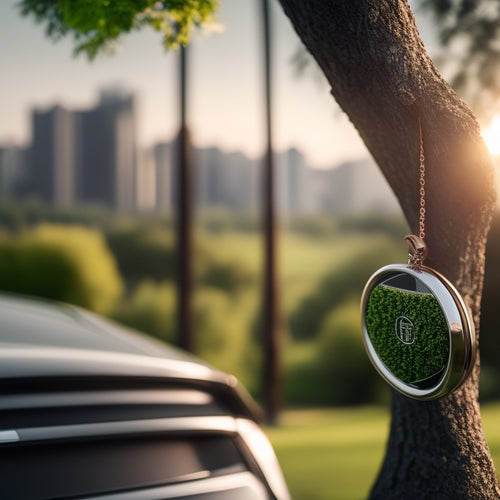Top 3 Solar Panel Systems for Small Homes
Share
You're looking for a top-rated solar panel system that can efficiently power your small home without breaking the bank or compromising on design aesthetics. When it comes to the top 3 systems, SunPower's Equinox system stands out with its sleek design and 4.5-star rating. Panasonic's HIT-240 system offers high efficiency rates, but at a higher cost. Finally, Tesla's Solar Roof system seamlessly integrates with Powerwall battery for maximum energy harvesting. To make the most of your small roof, prioritize high-efficiency panels, compact designs, and energy storage solutions. Explore these options further to find the perfect fit for your small home's energy needs.
Key Takeaways
• For small homes, consider high-efficiency solar panels with outputs ranging from 300 to 400 watts for maximum energy production.
• SunPower's Equinox system is a top-rated option, boasting a 4.5-star rating and sleek design for small roofs.
• Panasonic's HIT-240 system offers higher efficiency rates, but at a higher cost, making it ideal for those prioritizing energy production.
• Tesla's Solar Roof system seamlessly integrates with the Powerwall battery, providing a comprehensive energy harvesting solution.
• When selecting a system, prioritize panel size, efficiency, and layout to maximize energy production while minimizing space constraints.
Top Rated Small Home Systems
When shopping for a solar panel system for your small home, you'll want to explore the top-rated options that balance efficiency, cost, and durability. System comparisons are essential in making an informed decision. You'll find that top-rated systems from manufacturers like SunPower, Panasonic, and Tesla offer high-efficiency panels with outputs ranging from 300 to 400 watts.
Homeowner experiences play a significant role in determining the best system for your small home. Look for systems with high ratings and positive reviews from homeowners with similar energy needs and roof sizes. For instance, the SunPower Equinox system boasts a 4.5-star rating, with homeowners praising its sleek design and efficient energy production.
In contrast, the Panasonic HIT-240 system offers higher efficiency rates, but at a higher cost. Tesla's Solar Roof system, on the other hand, integrates seamlessly with their Powerwall battery, making it an attractive option for those seeking a complete energy solution.
Efficient Energy Harvesting Solutions
To maximize your small home's energy production, you'll want to focus on efficient energy harvesting solutions that optimize your solar panel system's performance. By doing so, you can reduce energy losses and maximize your system's output.
One key aspect of efficient energy harvesting is energy storage. By incorporating energy storage solutions, such as batteries, you can store excess energy generated during the day for use during periods of low sunlight or at night. This allows you to maximize your energy independence and reduce your reliance on the grid.
Additionally, integrating green infrastructure, such as solar panels with built-in inverters, can further optimize your system's performance. These inverters convert DC power from the solar panels to AC power, making it usable in your home.
Best Value for Small Roofs
Optimizing your solar panel system for small roofs requires careful consideration of panel size, efficiency, and layout to maximize energy production while minimizing space constraints. You need to make the most of your limited roof space to generate sufficient power. With budget constraints in mind, selecting the right system is essential.
When evaluating options, consider high-efficiency panels that can produce more power per unit area. This is particularly important when working with limited roof space. Look for systems with compact designs that can be easily installed and configured to fit your roof's unique dimensions. Additionally, consider systems with integrated inverters, which can help reduce installation costs and simplify the process.
To get the best value for your small roof, prioritize systems that offer a high wattage-to-size ratio. This will ensure you're generating the most power possible within the constraints of your roof space. By making informed decisions about panel efficiency, layout, and design, you can maximize your energy production while staying within your budget.
Frequently Asked Questions
Can I Install Solar Panels on My Own?
"You're not alone: 70% of homeowners consider DIY solar installation, but beware - DIY frustrations and safety concerns lurk. Without proper training, you risk electrical shock, roof damage, and system inefficiency, making professional installation a safer, smarter choice."
How Long Does It Take to Break Even on Investment?
You'll typically break even on your solar panel investment within 5-7 years, depending on your ROI analysis, which factors in energy savings, system cost, and local incentives, allowing you to reap long-term benefits.
Are Solar Panels Durable in Extreme Weather?
You'll be relieved to know that solar panels are designed to withstand extreme weather conditions, boasting impressive weather resistance and storm tolerance, ensuring your power supply remains uninterrupted even in harsh climates.
Do Solar Panels Work During Power Outages?
"As you flip the switch, darkness falls, but your solar panels, linked to a battery backup, kick in, ensuring grid independence and energy security, powering your home even during outages, when you need it most."
Can I Add More Panels to My System Later?
You can easily expand your system's capacity by adding more panels later, allowing for system expansion and future upgrades as your energy needs grow, ensuring you're always harnessing maximum power.
Related Posts
-

Why Eco-Friendly Rides Are the Future of Commuting
As you seek alternatives to traditional vehicles, you'll find eco-friendly rides are not only convenient and cost-eff...
-

Selecting Solar Panel Kits for Boat and RV Owners
When selecting a solar panel kit for your boat or RV, you'll want to calculate your daily energy consumption in watt-...
-

Why Choose Green Automotive Accessories for Your Ride?
By switching to eco-friendly automotive accessories, you can reduce your carbon footprint, save up to 20% on fuel cos...


